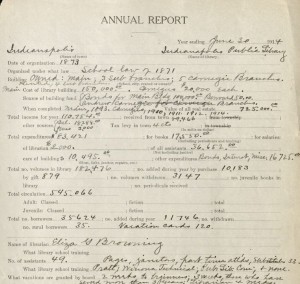Did you know that every public library in Indiana is expected to have the following things?
- A licensed director and staff.
- Separate collections and spaces for adults, young adults and children.
- Weekend hours.
- A collection development policy.
- Free public computers, and the ability to print or make copies.
- A resource sharing service, or lending arrangement with at least one other library in the state.
These rules, and more, are known as the Indiana Public Library Standards. This law is found in Title 590, Article 6, of the Indiana Administrative Code, and serves as a list of requirements that libraries must meet to get access to Indiana State Library services, as well as receive state and federal funding.
 The standards rules vary based on the size of a library’s population area. For example, large libraries that serve more people are required to be open for longer hours. Smaller libraries serving smaller or rural communities have some relaxed requirements, including education and work experience needed for their director.
The standards rules vary based on the size of a library’s population area. For example, large libraries that serve more people are required to be open for longer hours. Smaller libraries serving smaller or rural communities have some relaxed requirements, including education and work experience needed for their director.
The Indiana State Library’s Library Development Office determines which libraries are meeting standards annually by reviewing libraries’ policies and plans along with the self-reported responses to the Indiana Public Libraries Annual Report surveys. Most libraries have no problem meeting the requirement annually. For libraries with standards issues, Indiana State Library staff will follow up with the library and assist them in correcting their issues, if possible. Following this correspondence, the Indiana Library and Historical Board reviews standards issues and may find libraries not meeting the requirements to be “out of standards.” Libraries found out of standards can lose access to state-sponsored services, as well as funding opportunities.
The standards rules have evolved over the years and are evaluated every few years by Indiana State Library staff and a panel of volunteer library staff from public libraries around the state. The most recent review occurred in 2021 but did not result in any recommended changes to the legislation.
This blog post was written by Jen Clifton, Library Development Office director, Indiana State Library. She can be reached via email.

 1914 Indianapolis Public Library Annual Report
1914 Indianapolis Public Library Annual Report